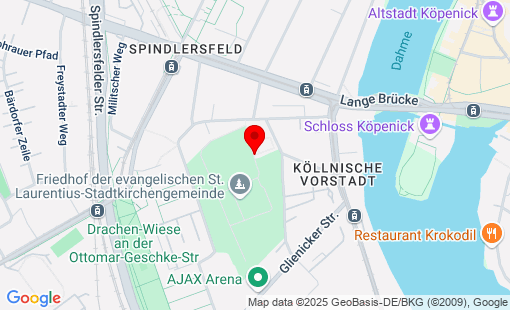Germany
Berlin-Köpenick, St.-Laurentius-Friedhof
Total Occupation: 9 fatalities
Total Occupation: 9 fatalities
in 1803, the Protestant congregation of the Laurentius Church acquired part of the Köpenicker Amtsacker as a burial ground. The cemetery was consecrated on December 15, 1811, and a few wall graves on the northern wall still remain from that time. In the course of its history, the cemetery was extended several times, e.g. in 1831 by a field for those who died of cholera and in 1879, 1883, 1889 and 1891, when the population of what would later become Berlin grew massively at the end of the 19th century. In 1880, a cemetery chapel was built, which was redesigned in the Expressionist style by the architect Otto Firle in 1926. Firle had also designed the logo for the Deutsche Luft-Reederei, a predecessor of Lufthansa, in 1918; the logo was adopted and became famous as the Lufthansa crane. A bell tower was erected in the 1950s; it contains a bell cast in 1561 by the Brandenburg bell founder Andreas Moldenhauer. In the adjoining part of the cemetery (the state-owned Rudower Straße cemetery), a burial ground was laid out in 1915 for the fallen of the First World War. This was extended during the Second World War for victims of that war. in 1969, the sculpture "Die Trauernde" by Peter Goettsche was erected. the war cemetery was redesigned in 1995. The cemetery also contains 9 graves of victims of the Kapp Putsch in 1920. (Martin Bayer, 14.04.2020)
